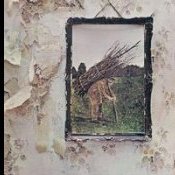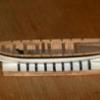-
Posts
3,084 -
Joined
-
Last visited
Reputation Activity
-
 Jaager got a reaction from mtaylor in Bending African Walnut
Jaager got a reaction from mtaylor in Bending African Walnut
If what you have is Lovoa trichilioides - what the Wood Database lists as African Walnut, trying to get a serious bend is fighting against the basic structure of the wood.
The grain is likely interlocked. This offers resistance to the fiber bundles sliding along side each other to produce a staggered formation. It might be more productive to substitute with a species that allows bending. Then spend the additional effort find a mixture of wood dyes that color the substitute to match the Walnut that you have used.
-
 Jaager got a reaction from mtaylor in UV Light affect on Rigging
Jaager got a reaction from mtaylor in UV Light affect on Rigging
Unless the case has good ventilation, it could turn into an oven. I think the effect is = visible light passes thru the glass, upon striking a surface inside it loses energy. The lower energy is IR and it reflects from the glass and bounces around inside or increases the temp of any material that it hits.
Man made fibers are catalyzed cross linked polymers. UV can act as a catalyst to produce additional cross linking. The more cross linking, the more rigid it becomes. Rigid is brittle, until under any stress, even a change in temp, it shatters. The location that you have chosen increases the rate at which organic materials follow Nature's imperative to return to CO2 and H2O.
-
 Jaager got a reaction from druxey in UV Light affect on Rigging
Jaager got a reaction from druxey in UV Light affect on Rigging
Unless the case has good ventilation, it could turn into an oven. I think the effect is = visible light passes thru the glass, upon striking a surface inside it loses energy. The lower energy is IR and it reflects from the glass and bounces around inside or increases the temp of any material that it hits.
Man made fibers are catalyzed cross linked polymers. UV can act as a catalyst to produce additional cross linking. The more cross linking, the more rigid it becomes. Rigid is brittle, until under any stress, even a change in temp, it shatters. The location that you have chosen increases the rate at which organic materials follow Nature's imperative to return to CO2 and H2O.
-
 Jaager got a reaction from Afonso in New guy looking for suggestions
Jaager got a reaction from Afonso in New guy looking for suggestions
Afonso,
My suggestion was that you build completely from just plans and materials that you directly obtain. I based this on you being on a mission and seriously focused on it.
I see now that you are coming in to this with less of a view of this landscape than I thought.
Before the internet, when starting this, it was a local club - if you were extremely lucky, otherwise it was books and magazines or journals dedicated to ship modeling and books about building the original ships, some of the books were reprints of books written at the time of the ships. The best of the books and best of the journal articles demonstrated and encouraged building from scratch. Unless your previous experience involved woodworking at the cabinet maker or fine furniture maker level, the learning curve was/is steep. It pretty much requires owning or having access to some fairly expensive tools, especially at the milling your own stock from lumber stage. When you have the materials - mainly wood stock with the proper dimensions - expensive tools are not necessary, but they make things go faster and easier. But you still will not be able to mimic Graham Chapman and build a model in bed, at night in the dark. (Monty Python)
A ship, especially a warship, involved/involves the most advanced technology of the culture building it. It is a serious endeavor. Should you wish to build a model of one, a model that is reasonably close to the original and that, in your imagination, could grace a museum, building it from scratch is still the way. This is especially true if your subject is unique or has been rarely modeled. Kits are primarily about making money for the mfg. They require being economical with the component materials, using methods that as many as possible can execute, and subjects with broad appeal and are supplied in large numbers. At the extreme, it is about selling a fantasy, an expensive fantasy that is more often than not beyond the existing skills of the buyer. At that level, the skill involved in the overall process is in the advertising, not in craftsmanship.
-
 Jaager got a reaction from mtaylor in Planking my Carrack. What's right, what's wrong
Jaager got a reaction from mtaylor in Planking my Carrack. What's right, what's wrong
You could maybe buy some wider stock that is the thickness of the planking so that it can be spilled.
Before you segment the planking area, two planks need to be in place and correct:
The lower wale and the garboard. For the garboard, only one edge should be spilled and that is the edge that meets the keel.
Mark's lower red line is the garboard and his length is how long it is. It does not chase the rabbet up the stem.
In the era of your model, I don't think the ends of the wale strakes tapered at the ends.
Get some thick hard pressed cardboard and fully plank with it. When you get that correct, the pieces can be used as patterns for the wood.
But the more wood strakes are applied, the less reliable will be the cardboard patterns. But new ones that fit the smaller space would be better.
-
 Jaager got a reaction from mtaylor in New guy looking for suggestions
Jaager got a reaction from mtaylor in New guy looking for suggestions
Afonso,
My suggestion was that you build completely from just plans and materials that you directly obtain. I based this on you being on a mission and seriously focused on it.
I see now that you are coming in to this with less of a view of this landscape than I thought.
Before the internet, when starting this, it was a local club - if you were extremely lucky, otherwise it was books and magazines or journals dedicated to ship modeling and books about building the original ships, some of the books were reprints of books written at the time of the ships. The best of the books and best of the journal articles demonstrated and encouraged building from scratch. Unless your previous experience involved woodworking at the cabinet maker or fine furniture maker level, the learning curve was/is steep. It pretty much requires owning or having access to some fairly expensive tools, especially at the milling your own stock from lumber stage. When you have the materials - mainly wood stock with the proper dimensions - expensive tools are not necessary, but they make things go faster and easier. But you still will not be able to mimic Graham Chapman and build a model in bed, at night in the dark. (Monty Python)
A ship, especially a warship, involved/involves the most advanced technology of the culture building it. It is a serious endeavor. Should you wish to build a model of one, a model that is reasonably close to the original and that, in your imagination, could grace a museum, building it from scratch is still the way. This is especially true if your subject is unique or has been rarely modeled. Kits are primarily about making money for the mfg. They require being economical with the component materials, using methods that as many as possible can execute, and subjects with broad appeal and are supplied in large numbers. At the extreme, it is about selling a fantasy, an expensive fantasy that is more often than not beyond the existing skills of the buyer. At that level, the skill involved in the overall process is in the advertising, not in craftsmanship.
-
 Jaager got a reaction from Gregory in New guy looking for suggestions
Jaager got a reaction from Gregory in New guy looking for suggestions
Afonso,
My suggestion was that you build completely from just plans and materials that you directly obtain. I based this on you being on a mission and seriously focused on it.
I see now that you are coming in to this with less of a view of this landscape than I thought.
Before the internet, when starting this, it was a local club - if you were extremely lucky, otherwise it was books and magazines or journals dedicated to ship modeling and books about building the original ships, some of the books were reprints of books written at the time of the ships. The best of the books and best of the journal articles demonstrated and encouraged building from scratch. Unless your previous experience involved woodworking at the cabinet maker or fine furniture maker level, the learning curve was/is steep. It pretty much requires owning or having access to some fairly expensive tools, especially at the milling your own stock from lumber stage. When you have the materials - mainly wood stock with the proper dimensions - expensive tools are not necessary, but they make things go faster and easier. But you still will not be able to mimic Graham Chapman and build a model in bed, at night in the dark. (Monty Python)
A ship, especially a warship, involved/involves the most advanced technology of the culture building it. It is a serious endeavor. Should you wish to build a model of one, a model that is reasonably close to the original and that, in your imagination, could grace a museum, building it from scratch is still the way. This is especially true if your subject is unique or has been rarely modeled. Kits are primarily about making money for the mfg. They require being economical with the component materials, using methods that as many as possible can execute, and subjects with broad appeal and are supplied in large numbers. At the extreme, it is about selling a fantasy, an expensive fantasy that is more often than not beyond the existing skills of the buyer. At that level, the skill involved in the overall process is in the advertising, not in craftsmanship.
-
 Jaager got a reaction from Kikatinalong in Planking my Carrack. What's right, what's wrong
Jaager got a reaction from Kikatinalong in Planking my Carrack. What's right, what's wrong
You could maybe buy some wider stock that is the thickness of the planking so that it can be spilled.
Before you segment the planking area, two planks need to be in place and correct:
The lower wale and the garboard. For the garboard, only one edge should be spilled and that is the edge that meets the keel.
Mark's lower red line is the garboard and his length is how long it is. It does not chase the rabbet up the stem.
In the era of your model, I don't think the ends of the wale strakes tapered at the ends.
Get some thick hard pressed cardboard and fully plank with it. When you get that correct, the pieces can be used as patterns for the wood.
But the more wood strakes are applied, the less reliable will be the cardboard patterns. But new ones that fit the smaller space would be better.
-
 Jaager got a reaction from JeffT in New guy looking for suggestions
Jaager got a reaction from JeffT in New guy looking for suggestions
Afonso,
First off - what is your location on Terra?
Second - You have set up a situation with mutually exclusive requirements. Kit + 16th C.,17th C., + Iberia + accurate
There are a few vessels from that time with documentation. Vasa is sort of at the top - Northern Europe .
Most of the recent finds from your area of interest have been done by nautical archaeologists. It is my impression that they do not hold us in high regard. Little that they find seems to reach us in a form that we can use.
Should you change one requirement = kit to scratch, there are several possibilities.
This requires that your standards for accurate be realistic.
I have series of books about an Iberian find at Red Bay, Canada, these plus the recent articles in SIS documenting a model, could be the basis for a build.
The following will require loose, very loose limits for accuracy:
I have plans for a Manila Galleon - also SIS I think. This part of SIS is now NRG content?
AOTS has a volume with speculative plans for the first squadron of C.Columbus. ( also from Britain Mary Rose and Susan Constant )
Wm Baker did plans for Mayflower - with some aspects and choices being seriously questioned.
In the 1970's there was available from Verlag Delius, Klasing & Co. a series of books with plans for your time of interest. They may appear for sale from time to time.
Osprey has a Spanish Galleon issue.
NIP volume - probably Conway - The Galleon by Peter Kirsch.
There are several books about Kogg finds.
The maritime museums in Iberia may have plans or plans of reconstructions.
Until your skill level reaches a level where you do not need to ask, I seriously advise sailing well away from kits or plans for multi deck warships - especially those from the 17th C.
-
 Jaager got a reaction from mtaylor in New guy looking for suggestions
Jaager got a reaction from mtaylor in New guy looking for suggestions
Afonso,
First off - what is your location on Terra?
Second - You have set up a situation with mutually exclusive requirements. Kit + 16th C.,17th C., + Iberia + accurate
There are a few vessels from that time with documentation. Vasa is sort of at the top - Northern Europe .
Most of the recent finds from your area of interest have been done by nautical archaeologists. It is my impression that they do not hold us in high regard. Little that they find seems to reach us in a form that we can use.
Should you change one requirement = kit to scratch, there are several possibilities.
This requires that your standards for accurate be realistic.
I have series of books about an Iberian find at Red Bay, Canada, these plus the recent articles in SIS documenting a model, could be the basis for a build.
The following will require loose, very loose limits for accuracy:
I have plans for a Manila Galleon - also SIS I think. This part of SIS is now NRG content?
AOTS has a volume with speculative plans for the first squadron of C.Columbus. ( also from Britain Mary Rose and Susan Constant )
Wm Baker did plans for Mayflower - with some aspects and choices being seriously questioned.
In the 1970's there was available from Verlag Delius, Klasing & Co. a series of books with plans for your time of interest. They may appear for sale from time to time.
Osprey has a Spanish Galleon issue.
NIP volume - probably Conway - The Galleon by Peter Kirsch.
There are several books about Kogg finds.
The maritime museums in Iberia may have plans or plans of reconstructions.
Until your skill level reaches a level where you do not need to ask, I seriously advise sailing well away from kits or plans for multi deck warships - especially those from the 17th C.
-
 Jaager got a reaction from Old Collingwood in La Belle Poule 1765 by mtaylor - Scale 1:64 - POB - French Frigate from ANCRE plans
Jaager got a reaction from Old Collingwood in La Belle Poule 1765 by mtaylor - Scale 1:64 - POB - French Frigate from ANCRE plans
Mark,
I did not notice until your replacement molds made it obvious, Belle was a bit of an out layer. The degree of hollow at the bow is more than Sea Witch even and Griffiths was heavily criticized for designing that. I wonder why Belle did not set a trend?
Dean
-
 Jaager got a reaction from mtaylor in Tailing deck beams
Jaager got a reaction from mtaylor in Tailing deck beams
What may have been going on =
The number of trees that are suited for warship construction is finite, especially on an island that is not all that large to begin with. In the zeal the build a large navy, all of the large old growth Oak was cut. They had to sacrifice their standards to match what they could obtain.
Unless the project is a cross section, in a model, it is a detail difficult to see. A close, but easier technique; have the clamp stop at the bottom of the beam and fit a short piece of the same wood between the beams that is the depth of the dovetail. Done well, the glue joint may appear to be wood grain.
-
 Jaager got a reaction from Canute in DeAgostini Model Space Sovereign of the Seas 1:84
Jaager got a reaction from Canute in DeAgostini Model Space Sovereign of the Seas 1:84
Rick,
This may have been Fate handing you a small mercy, and a choice to take a kinder path. I have a recollection of reading that far more SOS kits may reside at the back of closet selves than ever see completion. Building the original helped trigger a revolution. The ship is a first rate liner. It had more sculptures than a lot of museums. A sail flagship is a formidable challenge no matter how many models in the experience bank of the model shipwright. The salesmen weave a fantastic illusion of what you can have on your fireplace mantle, and try to trigger an impulse buy. It is not dropping a beginning swimmer into the deep end, it is dropping him into a storm tossed ocean with rip currents and whorl pools. Consider a project with a higher probability of completion to begin. Lots of advise here on what may be a good choice. Then, when you are ready, given where you are, maybe scratch build a model of Otway Burns' Snap Dragon. Then, if truly mad, the 74gun USS North Carolina.
-
 Jaager got a reaction from RickyGene in DeAgostini Model Space Sovereign of the Seas 1:84
Jaager got a reaction from RickyGene in DeAgostini Model Space Sovereign of the Seas 1:84
Rick,
This may have been Fate handing you a small mercy, and a choice to take a kinder path. I have a recollection of reading that far more SOS kits may reside at the back of closet selves than ever see completion. Building the original helped trigger a revolution. The ship is a first rate liner. It had more sculptures than a lot of museums. A sail flagship is a formidable challenge no matter how many models in the experience bank of the model shipwright. The salesmen weave a fantastic illusion of what you can have on your fireplace mantle, and try to trigger an impulse buy. It is not dropping a beginning swimmer into the deep end, it is dropping him into a storm tossed ocean with rip currents and whorl pools. Consider a project with a higher probability of completion to begin. Lots of advise here on what may be a good choice. Then, when you are ready, given where you are, maybe scratch build a model of Otway Burns' Snap Dragon. Then, if truly mad, the 74gun USS North Carolina.
-
 Jaager got a reaction from mtaylor in DeAgostini Model Space Sovereign of the Seas 1:84
Jaager got a reaction from mtaylor in DeAgostini Model Space Sovereign of the Seas 1:84
Rick,
This may have been Fate handing you a small mercy, and a choice to take a kinder path. I have a recollection of reading that far more SOS kits may reside at the back of closet selves than ever see completion. Building the original helped trigger a revolution. The ship is a first rate liner. It had more sculptures than a lot of museums. A sail flagship is a formidable challenge no matter how many models in the experience bank of the model shipwright. The salesmen weave a fantastic illusion of what you can have on your fireplace mantle, and try to trigger an impulse buy. It is not dropping a beginning swimmer into the deep end, it is dropping him into a storm tossed ocean with rip currents and whorl pools. Consider a project with a higher probability of completion to begin. Lots of advise here on what may be a good choice. Then, when you are ready, given where you are, maybe scratch build a model of Otway Burns' Snap Dragon. Then, if truly mad, the 74gun USS North Carolina.
-
 Jaager got a reaction from druxey in New here
Jaager got a reaction from druxey in New here
The sliding part is my conjecture. Whole moulding tends produce hulls with a generally similar conformation. Were I a designer at the time and was interested in producing something faster or more stable,
doing the experiment of moving the fore and aft design stations and observing the effect. would only involve erasing lines that were a failure. Granted - the vellum was probably expensive and doing a lot of handling of elemental lead was gradually making the draftsman dumber.
I have done a very preliminary lofting of the 7P IV , the big one that followed the famous 7P, compared to English and French contemporaries there is a long section in the middle where the shape does not change. It seems that more than a few 17th C Dutch plans available to us replicate the mid ship bend a bit more than those of other countries. It reminds me of a barge with a long sculpted bow and stern as opposed to the oft duplicated illustration of a fish superimposed on the profile of a race galleon - an attempt at streamlining? Where change is constant. Home waters that are a bit shallow - a deeper wedge shaped hull would sort of not work out too well?
-
 Jaager got a reaction from druxey in New here
Jaager got a reaction from druxey in New here
It is not the design aspect that is my interest. It is something a lot more mundane.
It is the mold loft product and what it actually was. I think the present description is
true for very late 19th C thru early 20th C. It was probably heavily influenced by what was
necessary for iron and steel. Materials that require much more precision and engineering, than does wood..
After 30-40 years of the dominance of iron, I think a short lived fad for large wooden hulls took hold and
those workers and architects who were back to building larger wooden hulls had probably been filtered thru
the 'new, modern' iron techniques and applied that to wood.
At the beginning - the era of van Yk - starting with 4 lofted bends and all the other timber shaping done by eye on the ways,
it was probably a long evolution until every timber was shaped using a pattern from the mold loft. I doubt that
even by 1860, that degree of pre engineering was at all common. I suspect that the replacement of wood with iron for the larger hulls
produced a situation where those with the necessary skills and experience to eyeball the needed wood cuts aged out and they did not
pass on what they did to enough workers to support a large industry.
Our practice of lofting every frame timber is a copy of what was done around 1900, but not the replication of actual practice before 1860 that we pretend it is.
-
 Jaager got a reaction from mtaylor in Intrepid (or more likely foolhardy!) newbie
Jaager got a reaction from mtaylor in Intrepid (or more likely foolhardy!) newbie
You could start your new log with: "for the steps preceding this point, see this log" and place a link to it.
-
 Jaager got a reaction from VTHokiEE in Intrepid (or more likely foolhardy!) newbie
Jaager got a reaction from VTHokiEE in Intrepid (or more likely foolhardy!) newbie
You could start your new log with: "for the steps preceding this point, see this log" and place a link to it.
-
 Jaager got a reaction from Canute in Right angle attachment
Jaager got a reaction from Canute in Right angle attachment
This is switching to a new lens with a broader view:
MicroMark is a US agent for a line of DC powered tools from Kaleas Minitool , a German company.
In the US marketed as the Micro-Make brand.
One of the tools is a MicroLux® Heavy-Duty Right Angle Disk Sander / Drill. The power of the sander is greater than one would expect.
There is a 3-jaw chuck for it, for drill bits, I have not tried that function. The tool is a box instead of a rod in shape.
Certainly not inexpensive, it requires saving a lot of box tops. It is about the best power tool that I have found for sanding inside a POF hull.
If you are drilling inside a hull and the bit size is #60 or smaller, there are a lot of inexpensive DC motors - small to very small and some have 3-jaw chucks - mini chucks.
AliExpress - a Chinese agent for a bunch of their mfg - has a lot of choices for motors. I have not needed anything from there since the trade war began - no idea about its effect.
Marlin P. Jones is a US supplier of small DC motors and a very useful = selectable output DC bench power supply for under $20 - the range is six levels from 3V to 12V.
This is an easy way to control the speed. The motors are small enough that if you can get your hand in, it will work. The small gage of the power wires - they do not get in the way.
-
 Jaager got a reaction from Canute in Pear Wood
Jaager got a reaction from Canute in Pear Wood
Jolly,
If you have any ambition to go to scratch building, get as much and more of what Haiko is offering as you can even unrealistically handle.. Work a deal and use specie even.
This is especially true if what is being offered is 4x4 or 8x4 (or your domestic equivalent of those dimensions). If your living situation is limited, long term rent a small storage unit.
Debark, seal all cut ends ( surplus house latex paint will do if gobbed on super thick - a piece of Bounty will do for a brush) - sticker between pieces. Find a storage unit location
that is not prone to termite or carpenter ant invasion. Maybe spread Borax fabric softener on the floor - kills roaches - maybe other beasties react against it too - study up.
There is also a local species of Buxus there, see if you can get a bunch, a big bunch.
If you do come over to the dark side, you will probably always regret it if you miss this. Think Scrooge McDuck in his vault of gold or Smaug in his.
Get with your fellow countrymen who share this interest and pool your efforts.
Let me add some of my perspective on this. I come at this from POF in the 1:48 to 1:60 range of scales. It is difficult to grasp just how much wood it takes to fully frame a ship at these scales.
An impressive amount winds up as saw dust. Tackling a liner will give you a real appreciation for the stress on the treasurer who had to come up with the money to pay for a real one or the sawyer who had to obliterate a forest to supply the wood needed.
-
 Jaager got a reaction from mtaylor in Right angle attachment
Jaager got a reaction from mtaylor in Right angle attachment
This is switching to a new lens with a broader view:
MicroMark is a US agent for a line of DC powered tools from Kaleas Minitool , a German company.
In the US marketed as the Micro-Make brand.
One of the tools is a MicroLux® Heavy-Duty Right Angle Disk Sander / Drill. The power of the sander is greater than one would expect.
There is a 3-jaw chuck for it, for drill bits, I have not tried that function. The tool is a box instead of a rod in shape.
Certainly not inexpensive, it requires saving a lot of box tops. It is about the best power tool that I have found for sanding inside a POF hull.
If you are drilling inside a hull and the bit size is #60 or smaller, there are a lot of inexpensive DC motors - small to very small and some have 3-jaw chucks - mini chucks.
AliExpress - a Chinese agent for a bunch of their mfg - has a lot of choices for motors. I have not needed anything from there since the trade war began - no idea about its effect.
Marlin P. Jones is a US supplier of small DC motors and a very useful = selectable output DC bench power supply for under $20 - the range is six levels from 3V to 12V.
This is an easy way to control the speed. The motors are small enough that if you can get your hand in, it will work. The small gage of the power wires - they do not get in the way.
-
 Jaager got a reaction from Roger Pellett in Right angle attachment
Jaager got a reaction from Roger Pellett in Right angle attachment
This is switching to a new lens with a broader view:
MicroMark is a US agent for a line of DC powered tools from Kaleas Minitool , a German company.
In the US marketed as the Micro-Make brand.
One of the tools is a MicroLux® Heavy-Duty Right Angle Disk Sander / Drill. The power of the sander is greater than one would expect.
There is a 3-jaw chuck for it, for drill bits, I have not tried that function. The tool is a box instead of a rod in shape.
Certainly not inexpensive, it requires saving a lot of box tops. It is about the best power tool that I have found for sanding inside a POF hull.
If you are drilling inside a hull and the bit size is #60 or smaller, there are a lot of inexpensive DC motors - small to very small and some have 3-jaw chucks - mini chucks.
AliExpress - a Chinese agent for a bunch of their mfg - has a lot of choices for motors. I have not needed anything from there since the trade war began - no idea about its effect.
Marlin P. Jones is a US supplier of small DC motors and a very useful = selectable output DC bench power supply for under $20 - the range is six levels from 3V to 12V.
This is an easy way to control the speed. The motors are small enough that if you can get your hand in, it will work. The small gage of the power wires - they do not get in the way.
-
 Jaager got a reaction from Landlubber Mike in Cherry veneer
Jaager got a reaction from Landlubber Mike in Cherry veneer
I think that the method used to cut the veneer is an important factor.
If it was rotary cut - a long blade and a BIG lathe, ( efficient and no waste to kerf ) the grain pattern is not natural and it wants to curl.
If it is sliced off on a vertical or horizontal plane - a band saw, (they probably lost more to kerf than they got as wood if it is thin) different patterns can present. Those who use large veneer pieces are generally looking for characteristics that are the opposite of what we want. They want "figured" and "interesting" while we want dull and boring.
You want to look at each piece and decide what you want to show. If it is to be painted, the grain pattern does not matter, just how much it wants to curl.
-
 Jaager got a reaction from popeye the sailor in La Belle Poule 1765 by mtaylor - Scale 1:64 - POB - French Frigate from ANCRE plans
Jaager got a reaction from popeye the sailor in La Belle Poule 1765 by mtaylor - Scale 1:64 - POB - French Frigate from ANCRE plans
Mark,
You are using this particular plywood because it plays nice with your laser ?
Why not produce duplicates or triplicates of each mold and glue laminate them on the outboard side of each master?
It will increase the strength and give a better land for the planking. The down side is more work rasping the bevel.
Dean











